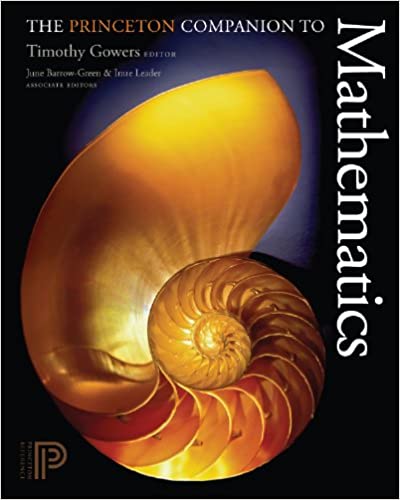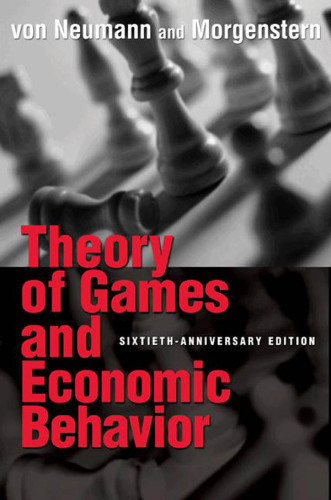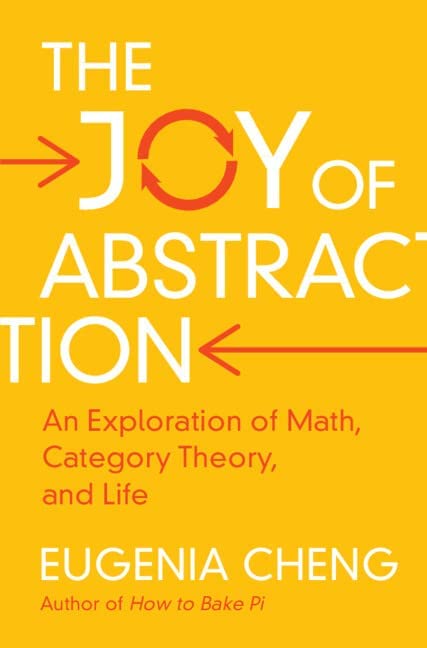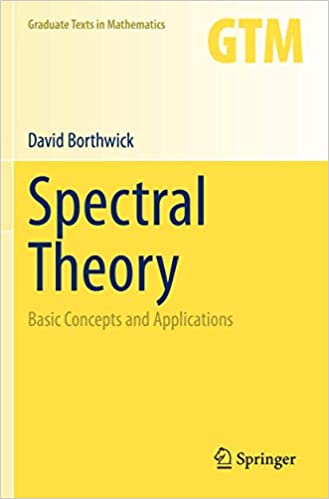Conceptual Mathematics: A First Introduction to Categories 2nd Edition by F. William Lawvere, ISBN-13: 978-0521719162
[PDF eBook eTextbook]
- Publisher: Cambridge University Press; 2nd edition (August 31, 2009)
- Language: English
- 404 pages
- ISBN-10: 1107654165
- ISBN-13: 978-0521719162
Conceptual Mathematics introduces the concept of category to beginning students, general readers, and practicing mathematical scientists based on a leisurely introduction to the important categories of directed graphs and discrete dynamical systems. The expanded second edition approaches more advanced topics via historical sketches and a concise introduction to adjoint functors.
In the last 60 years, the use of the notion of category has led to a remarkable unification and simplification of mathematics. Conceptual Mathematics, Second Edition, introduces the concept of ‘category’ for the learning, development, and use of mathematics, to both beginning students and general readers, and to practicing mathematical scientists. The treatment does not presuppose knowledge of specific fields, but rather develops, from basic definitions, such elementary categories as discrete dynamical systems and directed graphs; the fundamental ideas are then illuminated by examples in these categories.
Table of Contents:
Preface
xiii
Organisation of the book
xv
Acknowledgements
xvii
Preview
Session 1 Galileo and multiplication of objects
3
1 Introduction
3
2 Galileo and the flight of a bird
3
3 Other examples of multiplication of objects
7
Part I The category of sets
Article I Sets, maps, composition
13
1 Guide
20
Summary: Definition of category
21
Session 2 Sets, maps, and composition
22
1 Review of Article I
22
2 An example of different rules for a map
27
3 External diagrams
28
4 Problems on the number of maps from one set to another
29
Session 3 Composing maps and counting maps
31
Part II The algebra of composition
Article II Isomorphisms
39
1 Isomorphisms
39
2 General division problems: Determination and choice
45
3 Retractions, sections, and idempotents
49
4 Isomorphisms and automorphisms
54
5 Guide
58
Summary: Special properties a map may have
59
Session 4 Division of maps: Isomorphisms
60
1 Division of maps versus division of numbers
60
2 Inverses versus reciprocals
61
3 Isomorphisms as ‘divisors’
63
4 A small zoo of isomorphisms in other categories
64
Session 5 Division of maps: Sections and retractions
68
1 Determination problems
68
2 A special case: Constant maps
70
3 Choice problems
71
4 Two special cases of division: Sections and retractions
72
5 Stacking or sorting
74
6 Stacking in a Chinese restaurant
76
Session 6 Two general aspects or uses of maps
81
1 Sorting of the domain by a property
81
2 Naming or sampling of the codomain
82
3 Philosophical explanation of the two aspects
84
Session 7 Isomorphisms and coordinates
86
1 One use of isomorphisms: Coordinate systems
86
2 Two abuses of isomorphisms
89
Session 8 Pictures of a map making its features evident
91
Session 9 Retracts and idempotents
99
1 Retracts and comparisons
99
2 Idempotents as records of retracts
100
3 A puzzle
102
4 Three kinds of retract problems
103
5 Comparing infinite sets
106
Quiz
108
How to solve the quiz problems
109
Composition of opposed maps
114
Summary/quiz on pairs of ‘opposed’ maps
116
Summary: On the equation p = 1A
117
Review of 1-words’
118
Test 1
119
Session 10 Brouwer’s theorems
120
1 Balls, spheres, fixed points, and retractions
120
2 Digression on the contrapositive rule
124
3 Brouwer’s proof
124
4 Relation between fixed point and retraction theorems
126
5 How to understand a proof: The objectification and ‘mapification’ of concepts
127
6 The eye of the storm
130
7 Using maps to formulate guesses
131
Part III Categories of structured sets
Article III Examples of categories
135
1 The category Sp of endomaps of sets
136
2 Typical applications of S°
137
3 Two subcategories of S°
138
4 Categories of endomaps
138
5 Irreflexive graphs
141
6 Endomaps as special graphs
143
7 The simpler category SI: Objects are just maps of sets
144
8 Reflexive graphs
145
9 Summary of the examples and their general significance
146
10 Retractions and injectivity
146
11 Types of structure
149
12 Guide
151
Session 11 Ascending to categories of richer structures
152
1 A category of richer structures: Endomaps of sets
152
2 Two subcategories: Idempotents and automorphisms
155
3 The category of graphs
156
Session 12 Categories of diagrams
161
1 Dynamical systems or automata
161
2 Family trees
162
3 Dynamical systems revisited
163
Session 13 Monoids
166
Session 14 Maps preserve positive properties
170
1 Positive properties versus negative properties
173
Session 15 Objectification of properties in dynamical systems
175
1 Structure-preserving maps from a cycle to another endomap
175
2 Naming elements that have a given period by maps
176
3 Naming arbitrary elements
177
4 The philosophical role of N
180
5 Presentations of dynamical systems
182
Session 16 Idempotents, involutions, and graphs
187
1 Solving exercises on idempotents and involutions
187
2 Solving exercises on maps of graphs
189
Session 17 Some uses of graphs
196
1 Paths
196
2 Graphs as diagram shapes
200
3 Commuting diagrams
201
4 Is a diagram a map?
203
Test 2
204
Session 18 Review of Test 2
205
Part IV Elementary universal mapping properties
Article IV Universal mapping properties
213
1 Terminal objects
213
2 Separating
215
3 Initial object
215
4 Products
216
5 Commutative, associative, and identity laws for multiplication of objects
220
6 Sums
222
7 Distributive laws
222
8 Guide
223
Session 19 Terminal objects
225
Session 20 Points of an object
230
Session 21 Products in categories
236
Session 22 Universal mapping properties and incidence relations
245
1 A special property of the category of sets
245
2 A similar property in the category of endomaps of sets
246
3 Incidence relations
249
4 Basic figure-types, singular figures, and incidence, in the category of graphs
250
Session 23 More on universal mapping properties
254
1 A category of pairs of maps
255
2 How to calculate products
256
session 24 Uniqueness of products and definition of sum
261
1 The terminal object as an identity for multiplication
261
2 The uniqueness theorem for products
263
3 Sum of two objects in a category
265
Session 25 Labelings and products of graphs
269
1 Detecting the structure of a graph by means of labelings
270
2 Calculating the graphs A x Y
273
3 The distributive law
275
Session 26 Distributive categories and linear categories
276
1 The standard map Ax B1 + A X B2 -> A x (B1+ B2)
276
2 Matrix multiplication in linear categories
279
3 Sum of maps in a linear category
279
4 The associative law for sums and products
281
Session 27 Examples of universal constructions
284
1 Universal constructions
284
2 Can objects have negatives?
287
3 Idempotent objects
289
4 Solving equations and picturing maps
292
Session 28 The category of pointed sets
295
1 An example of a non-distributive category
295
Test 3
299
Test 4
300
Test 5
301
Session 29 Binary operations and diagonal arguments
302
1 Binary operations and actions
302
2 Cantor’s diagonal argument
303
Part V Higher universal mapping properties
Article V Map objects
313
1 Definition of map object
313
2 Distributivity
315
3 Map objects and the Diagonal Argument
316
4 Universal properties and `observables’
316
5 Guide
319
Session 30 Exponentiation
320
1 Map objects, or function spaces
320
2 A fundamental example of the transformation of map objects
323
3 Laws of exponents
324
4 The distributive law in cartesian closed categories
327
Session 31 Map object versus product
328
1 Definition of map object versus definition of product
329
2 Calculating map objects
331
Article VI The contravariant parts functor
335
1 Parts and stable conditions
335
2 Inverse Images and Truth
336
Session 32 Subobject, logic, and truth
339
1 Subobjects
339
2 Truth
342
3 The truth value object
344
Session 33 Parts of an object: Toposes
348
1 Parts and inclusions
348
2 Toposes and logic
352
Article VII The Connected Components Functor
358
1 Connectedness versus discreteness
358
2 The points functor parallel to the components functor
359
3 The topos of right actions of a monoid
360
Session 34 Group theory and the number of types of connected objects
362
Session 35 Constants, codiscrete objects, and many connected objects
366
1 Constants and codiscrete objects
366
2 Monoids with at least two constants
367
Appendices
368
Appendix I Geometery of figures and algebra of functions
369
1 Functors
369
2 Geometry of figures and algebra of functions as categories themselves
370
Appendix II Adjoint functors with examples from graphs and dynamical systems
372
Appendix III The emergence of category theory within mathematics
378
Appendix IV Annotated Bibliography
381
Index
385
F. William Lawvere is a Professor Emeritus of Mathematics at the State University of New York. He has previously held positions at Reed College, the University of Chicago and the City University of New York, as well as visiting Professorships at other institutions worldwide. At the 1970 International Congress of Mathematicians in Nice, Prof. Lawvere delivered an invited lecture in which he introduced an algebraic version of topos theory which united several previously ‘unrelated’ areas in geometry and in set theory; over a dozen books, several dozen international meetings, and hundreds of research papers have since appeared, continuing to develop the consequences of that unification.
Stephen H. Schanuel is a Professor of Mathematics at the State University of New York at Buffalo. He has previously held positions at Johns Hopkins University, Institute for Advanced Study and Cornell University, as well as lecturing at institutions in Denmark, Switzerland, Germany, Italy, Colombia, Canada, Ireland, and Australia. Best known for Schanuel’s Lemma in homological algebra (and related work with Bass on the beginning of algebraic K–theory), and for Schanuel’s Conjecture on algebraic independence and the exponential function, his research thus wanders from algebra to number theory to analysis to geometry and topology.
What makes us different?
• Instant Download
• Always Competitive Pricing
• 100% Privacy
• FREE Sample Available
• 24-7 LIVE Customer Support




Lily Fisher (verified owner) –
Everything was perfect—quick, easy, and fast delivery.